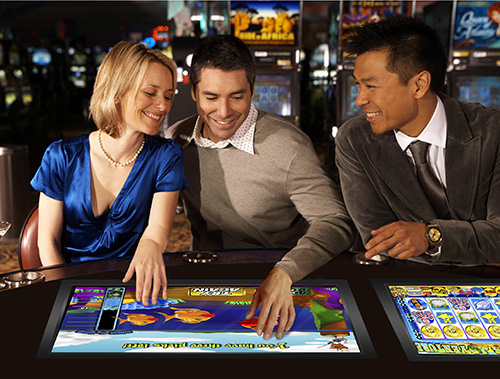Touchscreen technology has revolutionised the design of gaming and amusement equipment, writes Simon Liddle.

TODAY, few consumer electronic devices do not carry some form of touchscreen technology and its influence on the design of amusement games is evident in the majority of products reaching the market. Touchscreens play an important role in gaming and pay-to-play amusements, blurring the lines between mobile and tablet-style gameplay.
The touch experience has “revolutionised” the nature of gaming and amusement machines in the past few years,” said Dave Williams, EMEA sales manager – gaming, at 3M’s display materials and systems division. “Touchscreens open up a whole new raft of creative possibilities for innovative designers and it makes for an enjoyable user experience, so it’s no surprise it has taken off so well in this market.”
With the steady move from mechanical, reel-based equipment to digital LCD/TFT displays, the touchscreen attach rate on equipment has been expanding in the last decade, he said.
The availability and application of touchscreen technology has also changed the direction of gaming and amusement machine design, clearly influencing the way manufacturers approach new products.
“Touchscreens have been instrumental in gaming equipment in enabling instantly updatable games and features,” said Nick How, director of display supplier Advantech GPEG. “This ability has fundamentally changed the way in which the industry functions and monetises its products.”
This explosion in demand for such display technology has been seen across a range of consumer applications and, it seems, the gaming industry has been quick to realise its potential.
“Touchscreen technology is primarily being driven by consumer trends for low-power, easy-to-use user interfaces,” said How. “Some of these advancements make their way into the larger sizes more commonly seen in gaming and many specialist companies focus on successfully migrating the technology with the requirements demanded by the gaming sector.”
The basic requirement of a touchscreen is to work consistently and quickly, said Williams. It also needs to be visible even in difficult lighting conditions and to deal with heavy traffic. “That means using touch components that are extremely durable, work well in poor light and provide a rapid response rate, even when multiple hands are engaging with the screen at the same time,” he said.
Read the full article in the November issue of InterGame

